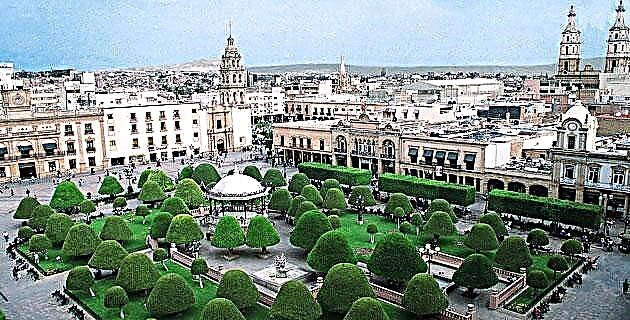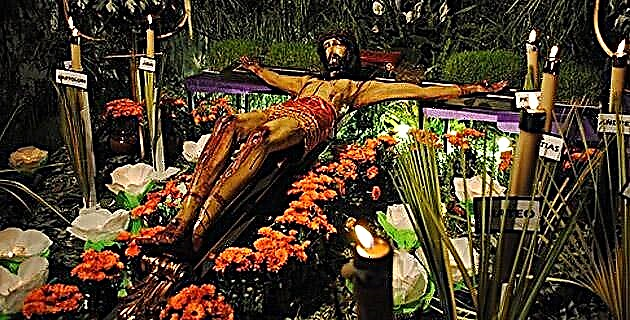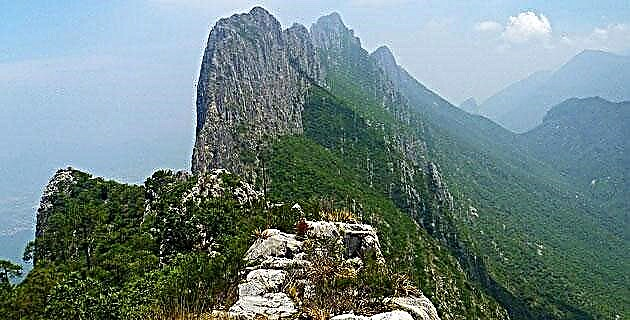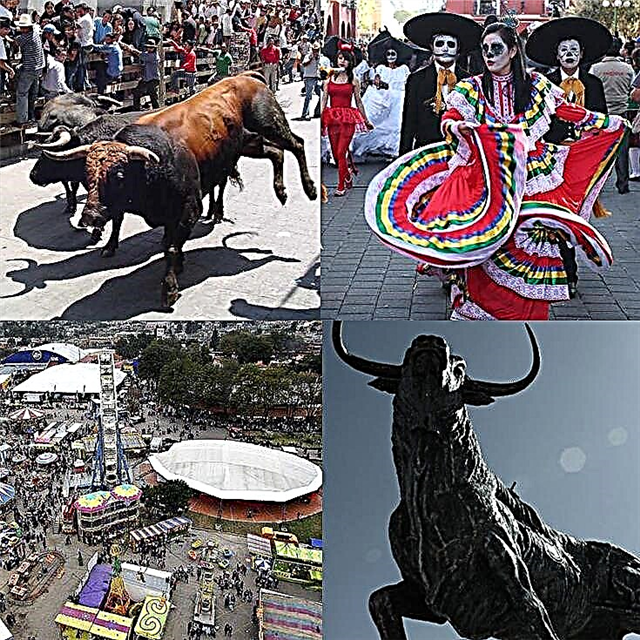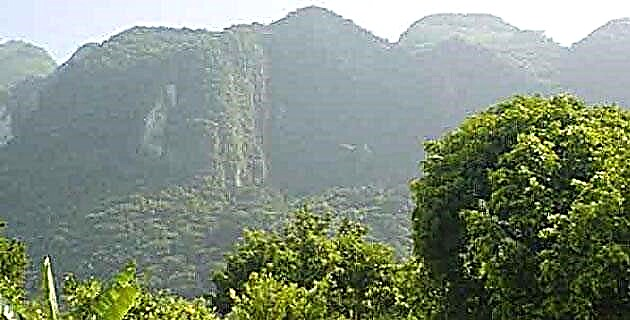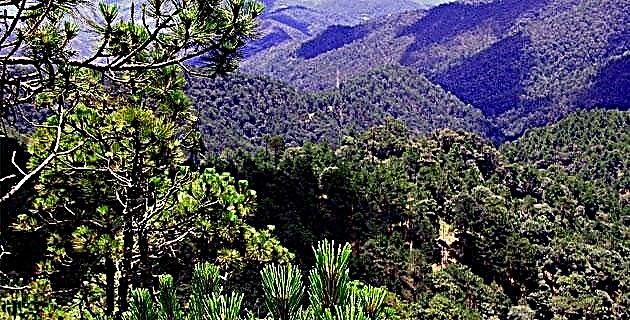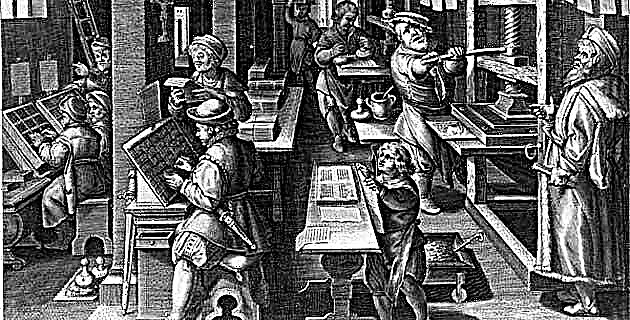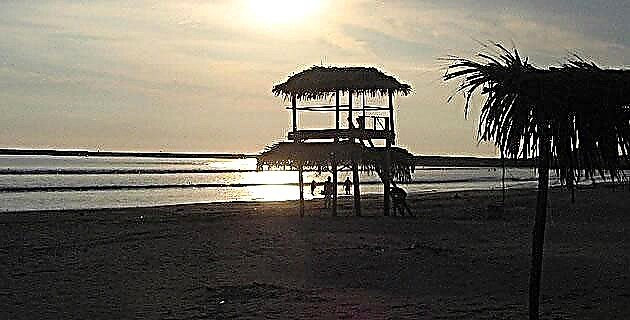
At the end of the 18th century, San Blas was recognized as the most important naval station in New Spain on the Pacific coast.
San Blas, in the state of Nayarit, is a warm place where the beauty of exuberant tropical vegetation and the tranquility of its beautiful beaches go hand in hand with a history that combines pirate attacks, colonial expeditions and glorious battles for the Mexico's independence.
We arrived when the church bells were ringing in the distance, announcing mass. Dusk began as we walked through the picturesque cobbled streets of the town, admiring the rustic facades of the houses, while the Sun bathed, with soft golden light, the extraordinary multicolored vegetation, with bougainvillea and tulips of different shades. We were ecstatic by the tropical bohemian atmosphere that reigned in the port, full of colors and friendly people.
Amused, we observed a group of children while they played ball. After a while they approached us and began to "bombard us" with questions almost in unison: "What are their names? Where do they come from? How long are they going to be here?" They spoke so fast and with so many idioms that it was sometimes difficult to understand each other. We say goodbye to them; little by little the sounds of the town were silenced, and that first night, like the others we spent in San Blas, was wonderfully peaceful.
The next morning we went to the tourism delegation, and there we were received by Dona Manolita, who kindly told us about the surprising and little known history of this place. With pride he exclaimed: "You are in the lands of the oldest port in the state of Nayarit!"
CENTURIES OF HISTORY
The first mentions of the Pacific coasts, where the port of San Blas is located, date from the 16th century, during the time of the Spanish colony, and are due to the colonizer Nuño Beltrán de Guzmán. His chronicles allude to the territory as a place lavish in cultural riches and extraordinary abundance of natural resources.
Since the reign of Carlos III and in its desire to consolidate the colonization of the Californias, Spain considered it important to establish a permanent punctuation enclave to explore these lands, which is why San Blas was chosen.
The site marked its importance due to being a bay protected by mountains -excellent strategic location, convenient for the expansion plans of the colony-, and because in the region there were suitable tropical wood forests, both in quality and quantity, for the manufacture of boats. In this way, the construction of the port and a shipyard began in the second half of the 17th century; in October 1767 the first ships were launched into the sea.
The main buildings were made on Cerro de Basilio; there you can still see the remains of the Contaduría Fort and the Virgen del Rosario Temple. The port was inaugurated on February 22, 1768 and, with this, an important boost was given to the port organization, based on its already mentioned strategic value and on the export of gold, fine woods and the coveted salt. The commercial activity of the port was of great importance; Customs were established to control the flow of merchandise arriving from different parts of the world; the famous Chinese naos also arrived.
Around the same time, the first missions to evangelize the Baja California peninsula went out, under the guidance of Father Kino and Fray Junípero Serra, who returned to San Blas four years later, in 1772. Shortly after this town was officially recognized as the most important naval station and viceregal shipyard of New Spain on the Pacific coast.
Between 1811 and 1812, when Mexico's trade with the Philippines and other Eastern countries was prohibited through the port of Acapulco, an intense black market took place in San Blas, for which Viceroy Félix María Calleja ordered it to be closed, although its commercial activity continued for 50 more years.
While Mexico was fighting for its independence, the port witnessed the heroic defense carried out against Spanish rule by the insurgent priest José María Mercado, who with great audacity, firm courage and a handful of ragged and badly armed men, took the fort to the insurgents, without a single shot, and also made the Creole population and the Spanish garrison surrender.
In 1873 the port of San Blas was again canceled and closed to commercial navigation by the then president Lerdo de Tejada, but it continued to function as a tourist and fishing center to this day.
DUTY WITNESSES OF A GLORIOUS PAST
At the end of Doña Manolita her narration, we hurried out to see the scenes of such important events.
Behind us was the current town, while we walked along the old path that would lead us to the ruins of old San Blas.
Fiscal affairs were handled in the Accounting Fort, although it was also used as a warehouse for merchandise from commercial ships. It was built in 1760 and it took six months to put up the thick dark gray stone walls, warehouses and the designated room for storing ammunition, rifles and gunpowder (known as the powder magazine).
As we walked through the “L” -shaped construction we thought: “if these walls spoke, how much would they tell us”. The huge rectangular windows with lowered arches stand out, as well as the esplanades and the central patio, where some of the cannons used for the protection of such an important site are still placed. On one of the fort's walls there is a plaque alluding to José María Mercado, its main defender.
Sitting on a small white fence, and leaning against one of the canyons, at my feet there was a great ravine about 40 m deep; the panorama was extraordinary. From that place I could see the port area and the tropical vegetation as a great setting for the imposing and always blue Pacific Ocean. The coastal landscape provided a fabulous view with huge trees and dense palm groves. When looking towards the land, the green of the vegetation was lost as far as the eye could reach.
The old Temple of the Virgen del Rosario is located a few meters from the fort; It was built between 1769 and 1788. The façade and walls, also made of stone, are supported by thick columns. The Virgin who once worshiped there was called "La Marinera", because she was the patron of those who came to her to ask for her blessing on land and, above all, at sea. These tough men helped the missionaries during the construction of this colonial temple.
On the walls of the church you can see two stone medallions worked in bas-relief, in which are the sphinxes of the kings of Spain, Carlos III and Josefa Amalia de Sajonia. On the upper part, six arches support the vault, and others the choir.
Here were the bronze bells referred to by the American romantic poet Henry W. Longfellow, in his poem “The bells of San Blas”: “For me who have always been a seer of dreams; for me that I have confused the unreal with the existent, the bells of San Blas are not only in name, since they have a strange and wild ringing ”.
On the way back to the town, we go to one side of the main square where the ruins of the former Maritime Customs and the old Harbor Master, from the early 19th century are located.
TROPICAL PARADISE
San Blas forced us to stay more days than planned, since in addition to its history, it is surrounded by estuaries, lagoons, bays and mangroves, which were well worth visiting, especially when observing the large number of bird species, reptiles and other organisms that inhabit this tropical paradise.
For those who like to know quiet places and enjoy magnificent landscapes, worth mentioning is La Manzanilla beach, from where we had the opportunity to appreciate a beautiful panoramic view of the different beaches of the port.
The first one we visited was El Borrego, 2 km from the center of San Blas. The place was perfect for meditation exercises. There were only a few fishermen's houses on the shore.
We also enjoy Matanchén Bay, a splendid cove 7 km long by 30 m wide; We swim in its calm waters and, lying on the soft sand, we enjoy the radiant sun. To quench our thirst, we enjoy a fresh water made from coconuts specially cut for us.
One kilometer further on is Las Islitas beach, formed by three small bays separated from each other by a rock, which gives rise to small islets that are called San Francisco, San José, Tres Mogotes, Guadalupe and San Juan; it was a refuge for daring pirates and buccaneers. In Las Islitas we discover endless corners and inlets where flora and fauna are displayed in a splendid ecosystem.
We also visit other beach areas very close to San Blas, such as Chacala, Miramar and La del Rey; of the latter, it is not known if the name refers to the Spanish monarch Carlos III or to the Great Nayar, a Cora warrior, lord of that region before the arrival of the Spanish; Be that as it may, this beach is beautiful and, strangely enough, rarely frequented.
The last night we went to one of the many restaurants located in front of the sea, to delight ourselves with the delicious and famous gastronomy of the port, and among countless exquisite dishes prepared basically with marine products, we decided on the tatemada lisa, which we savored with great pleasure.
It is worth walking calmly through this Nayarit town that transports us to the past and allows us, at the same time, to experience the warm provincial atmosphere, as well as to enjoy magnificent beaches of soft sand and calm waves.
IF YOU GO TO SAN BLAS
If you are in the capital of the state of Nayarit, Tepic, and want to reach the Matanchén bay, take the federal highway or highway no. 15, northbound, towards Mazatlán. Once you reach the Crucero de San Blas, continue west on federal highway no. 74 that will take you, after traveling 35 km, directly to the port of San Blas on the Nayarit coast.

